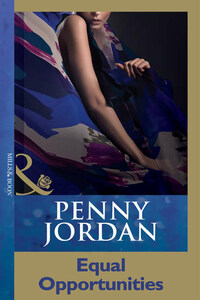COPYRIGHT
William Collins
An imprint of HarperCollinsPublishers
1 London Bridge Street
London SE1 9GF
www.williamcollinsbooks.com
This eBook first published in Great Britain by William Collins in 2018
1
First published in Great Britain by
Geoffrey Bles 1952
Copyright © 1933 C.S. Lewis Pte Ltd
A catalogue record for this book is available from the British Library
Cover design and illustration by
Kimberly Glyder
All rights reserved under International and Pan-American Copyright Conventions. By payment of the required fees, you have been granted the non-exclusive, non-transferable right to access and read the text of this e-book on-screen. No part of this text may be reproduced, transmitted, down-loaded, decompiled, reverse engineered, or stored in or introduced into any information storage and retrieval system, in any form or by any means, whether electronic or mechanical, now known or hereinafter invented, without the express written permission of HarperCollins
Source ISBN: 978-0-00-825458-2
Ebook Edition © May 2018 ISBN: 9780008277918
Version: 2018-05-17
PREFACE TO THE THIRD EDITION
On re-reading this book ten years after I wrote it, I find its chief faults to be those two which I myself least easily forgive in the books of other men: needless obscurity, and an uncharitable temper.
There were two causes, I now realise, for the obscurity. On the intellectual side my own progress had been from ‘popular realism’ to Philosophical Idealism; from Idealism to Pantheism; from Pantheism to Theism; and from Theism to Christianity. I still think this a very natural road, but I now know that it is a road very rarely trodden. In the early thirties I did not know this. If I had had any notion of my own isolation, I should either have kept silent about my journey or else endeavoured to describe it with more consideration for the reader’s difficulties. As things were, I committed the same sort of blunder as one who should narrate his travels through the Gobi Desert on the assumption that this route was as familiar to the British public as the line from Euston to Crewe. And this original blunder was soon aggravated by a profound change in the philosophical thought of our age. Idealism itself went out of fashion. The dynasty of Green, Bradley, and Bosanquet fell, and the world inhabited by philosophical students of my own generation became as alien to our successors as if not years but centuries had intervened.
The second cause of obscurity was the (unintentionally) ‘private’ meaning I then gave to the word ‘Romanticism’. I would not now use this word to describe the experience which is central in this book. I would not, indeed, use it to describe anything, for I now believe it to be a word of such varying senses that it has become useless and should be banished from our vocabulary. Even if we exclude the vulgar sense in which a ‘romance’ means simply ‘a love affair’ (Peer and Film Star Romance) I think we can distinguish at least seven kinds of things which are called ‘romantic’.
1. Stories about dangerous adventure – particularly, dangerous adventure in the past or in remote places – are ‘romantic’. In this sense Dumas is a typically ‘romantic’ author, and stories about sailing ships, the Foreign Legion, and the rebellion of 1745, are usually ‘romantic’.
2. The marvellous is ‘romantic’, provided it does not make part of the believed religion. Thus magicians, ghosts, fairies, witches, dragons, nymphs, and dwarfs are ‘romantic’; angels, less so. Greek gods are ‘romantic’ in Mr James Stephens or Mr Maurice Hewlett; not so in Homer and Sophocles. In this sense Malory, Boiardo, Ariosto, Spenser, Tasso, Mrs Radcliffe, Shelley, Coleridge, William Morris, and Mr E. R. Eddison are ‘romantic’ authors.
3. The art dealing with ‘Titanic’ characters, emotions strained beyond the common pitch, and high-flown sentiments or codes of honour is ‘romantic’. (I welcome the growing use of the word ‘Romanesque’ to describe this type.) In this sense Rostand and Sidney are ‘romantic’, and so (though unsuccessfully) are Dryden’s Heroic Dramas, and there is a good deal of ‘romanticism’ in Corneille. I take it that Michelangelo is, in this sense, a ‘romantic’ artist.
4. ‘Romanticism’ can also mean the indulgence in abnormal, and finally in anti-natural, moods. The macabre is ‘romantic’, and so is an interest in torture, and a love of death. This, if I understand them, is what M. Mario Praz and M. D. de Rougemont would mean by the word. In this sense Tristan is Wagner’s most ‘romantic’ opera; Poe, Baudelaire, and Flaubert, are ‘romantic’ authors; Surrealism is ‘romantic’.
5. Egoism and Subjectivism are ‘romantic’. In this sense the typically ‘romantic’ books are Werther and Rousseau’s Confessions, and the works of Byron and Proust.
6. Every revolt against existing civilisation and conventions whether it looks forward to revolution, or backward to the ‘primitive’ is called ‘romantic’ by some people. Thus pseudo-Ossian, Epstein, D. H. Lawrence, Walt Whitman, and Wagner are ‘romantic’.














